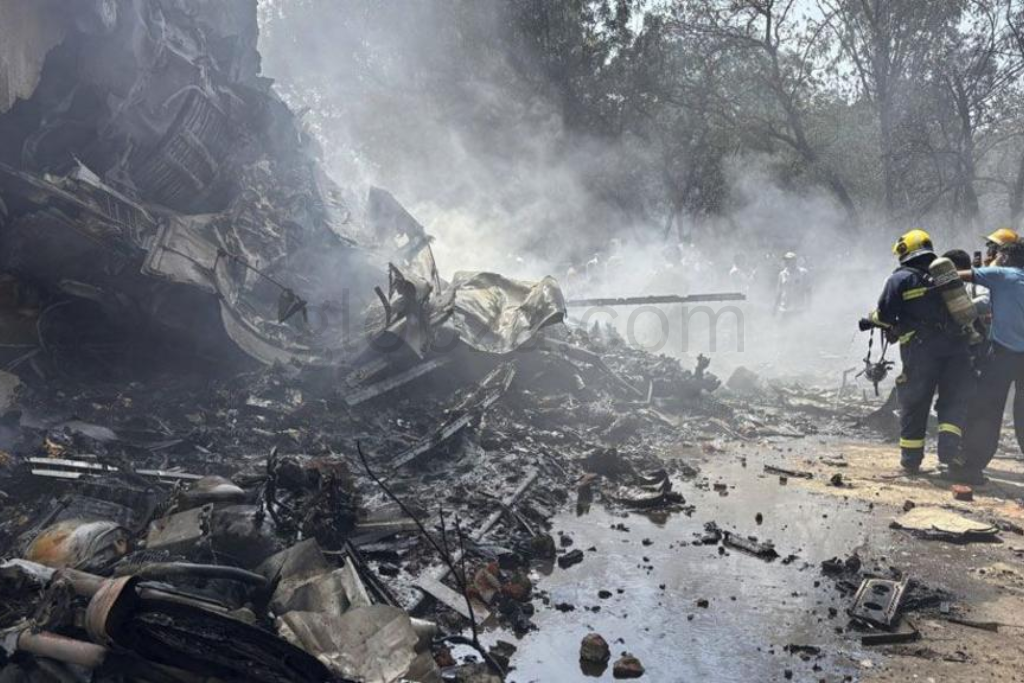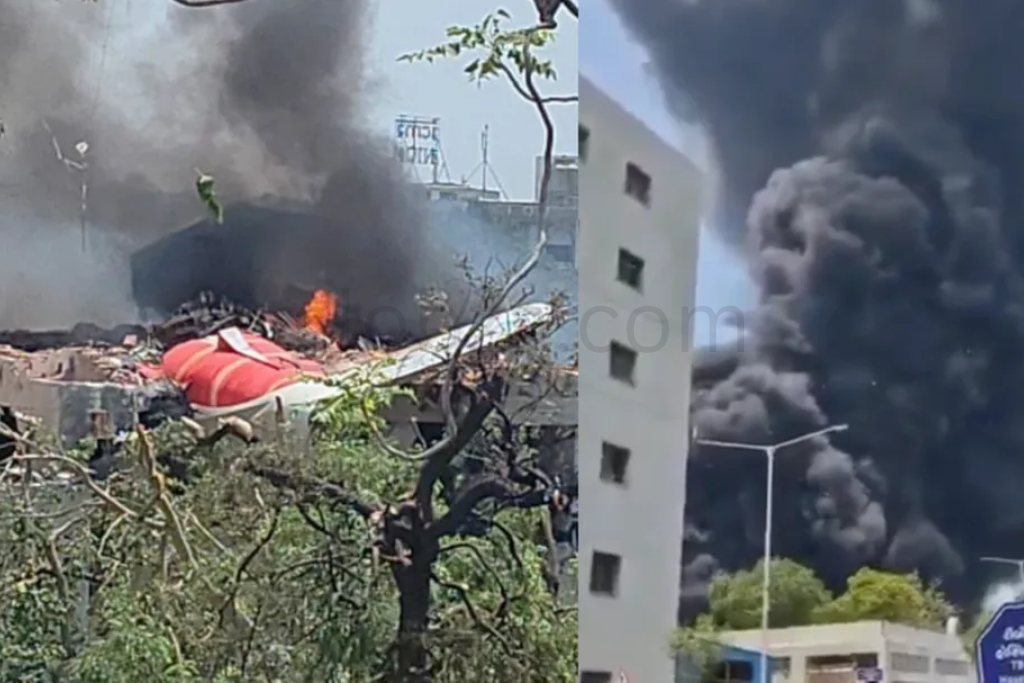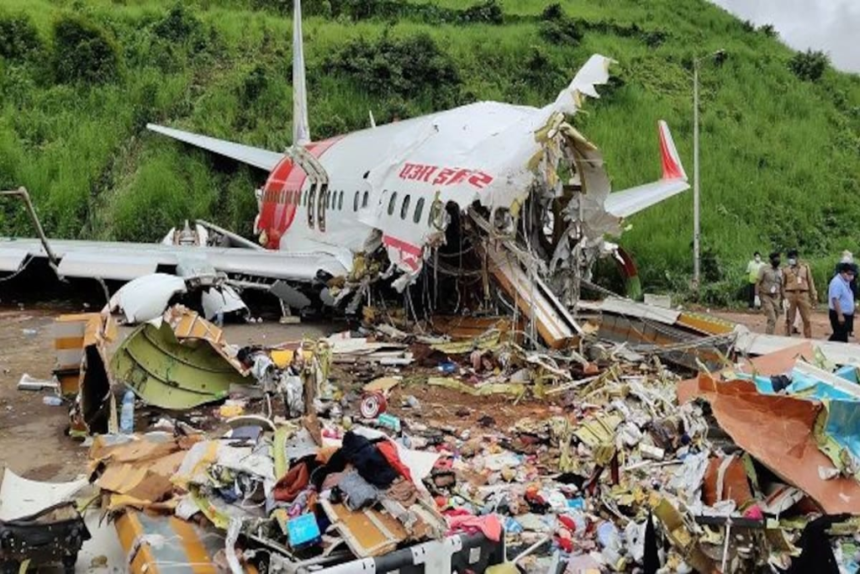India Plane Crash: Investigation & Safety
News of a London-bound passenger plane crash has shocked the world. The aircraft carried 242 people. Moreover, it crashed shortly after taking off from an Indian airport. This devastating event means an immense loss of life. Crucially, it also triggers a comprehensive India Plane Crash Investigation. This inquiry aims to find the precise reasons for such a catastrophic failure. The incident immediately grabbed international attention. Indeed, it highlighted inherent complexities and risks in modern air travel. This occurs despite air travel’s statistical safety. As the world mourns the victims, a meticulous inquiry begins. Investigators examine every facet of the flight. This includes maintenance records and air traffic control communications. This crucial phase lays the groundwork for understanding what happened. A prominent aviation expert once noted, “Every air disaster, though tragic, contributes to the collective knowledge base that continually improves global aviation safety standards.” The industry’s dedication to uncovering the truth underscores its commitment to preventing future recurrences.
The Immediate Aftermath and Emergency Response
A swift and extensive emergency response followed the harrowing incident. It began at the crash site. Local authorities quickly mobilized. National disaster relief teams and medical personnel supported them. Consequently, they secured the area and started search and rescue operations. The accident involved a large commercial aircraft. This posed significant logistical challenges for first responders. They worked urgently against time. Their immediate priorities were clear. They aimed to identify potential survivors and provide urgent medical aid. Containing any hazardous materials was also crucial. Various agencies coordinated their efforts. These included local police, fire services, and military units. This coordination proved vital in managing the chaotic scene. Eyewitness accounts provided initial perspectives. These were often distressed and fragmented. They described moments before and after the crash. A senior disaster management official remarked, “In the face of such overwhelming tragedy, the coordinated efforts of emergency services represent humanity’s collective will to mitigate suffering and save lives.” This highlights the incredible dedication and bravery displayed. This crucial phase always focuses on saving lives. Furthermore, it establishes preliminary control over a devastating situation. Then, deeper analytical work can begin.

Launching the India Plane Crash Investigation
The formal India Plane Crash Investigation began almost immediately. The Directorate General of Civil Aviation (DGCA) leads it. Other relevant international aviation bodies also participate. Expert teams arrived at the scene. They included accident investigators, engineers, and flight data specialists. Their exhaustive examination quickly commenced. Their primary objective is meticulous. They collect and preserve all evidence. This ranges from wreckage fragments to electronic data. The aircraft’s “black boxes” are key. These are the flight data recorder (FDR) and cockpit voice recorder (CVR). Significantly, these devices often hold the key to understanding. They show the aircraft’s performance, pilot actions, and cockpit environment. This covers critical moments before impact. The investigation follows strict international protocols. Organizations like the International Civil Aviation Organization (ICAO) set these. They ensure objectivity and thoroughness. A lead investigator from a past major air disaster stated, “Every piece of wreckage tells a story; our job is to listen intently and piece together the narrative of what happened.” This shows the forensic precision required. This methodical approach ensures no stone is left unturned. It seeks to determine the chain of events leading to the crash. This forms the backbone of the entire inquiry.
Unraveling Potential Causes: Early Findings and Analysis
As the India Plane Crash Investigation progresses, experts examine various potential contributing factors. Initial analyses cover a broad spectrum. They look at possibilities like mechanical failure. This includes engine issues or structural defects. Human error is another area. This involves pilot actions, air traffic control communication, or ground crew procedures. Environmental factors also get consideration. This includes adverse weather conditions or external interference. Investigators review maintenance logs and air traffic control recordings. Any anomalies are actively sought out. The aircraft’s history also receives consideration. It is vital to avoid premature conclusions. The cause of an aviation accident is rarely singular. Instead, it often involves a complex interplay of multiple factors. For example, a minor technical glitch might worsen. Specific weather or a pilot’s response could exacerbate it. A veteran aerospace engineer explained, “Aviation accidents are rarely caused by a single smoking gun; they are usually the tragic convergence of multiple contributing factors, each playing its part in the unfolding disaster.” This emphasizes the need for comprehensive analysis. This multi-faceted approach ensures all potential variables are considered. It provides a holistic understanding of the incident’s origins.
The Human Cost: Supporting Victims and Their Families
Beyond the technical aspects of the India Plane Crash Investigation, the human toll remains immense. The tragedy has caused the loss of 242 lives. This leaves an immeasurable void for countless families and communities. These families span multiple nations. Airlines activate specialized family assistance centers. They provide various types of support. This ranges from grief counseling to psychological aid. Logistical assistance for identification and repatriation of remains is also offered. Governments and humanitarian organizations also provide resources. They offer their support networks. The emotional and psychological trauma for victims’ families is profound. Moreover, it is long-lasting. This requires sustained compassion and comprehensive care. Supporting these families during their darkest hours is critical. It is a key component of disaster response. It recognizes the deep personal impact of such events. A prominent psychologist specializing in trauma recovery affirmed, “In moments of profound loss, empathy and sustained support for the bereaved are paramount; their healing journey is long and requires collective understanding.” This commitment to human dignity and care underscores the moral responsibility. It follows any major disaster. It ensures affected individuals receive necessary resources to navigate their grief.
Enhancing Aviation Safety After the Crash
Every aviation accident prompts re-evaluation. This tragic event is no exception. Indeed, it often leads to potential enhancement of global aviation safety protocols. Findings from the India Plane Crash Investigation will likely lead to new recommendations. They could also prompt policy changes and technological advancements. These aim to prevent similar incidents in the future. Specific actions might include stricter maintenance schedules. Updated pilot training modules could focus on emergency procedures. Improvements in air traffic management systems are also possible. Aircraft design might even see modifications. The aviation industry maintains a rigorous safety culture. Consequently, it constantly adapts and evolves. It learns from past events. Regulators worldwide will closely monitor the investigation’s outcomes. They will integrate relevant findings into their safety frameworks. A leading voice in international airline safety observed, “Safety in aviation is a dynamic field, constantly refined by the lessons, however painful, learned from every incident; it’s a perpetual quest for perfection.” This highlights the industry’s unwavering commitment to continuous improvement. This proactive approach drives exceptional air travel safety. It is founded on meticulous investigation and collaborative learning.

Global Cooperation in Air Accident Probes
Modern aviation involves flights crossing international borders. Aircraft are often manufactured in various countries. Therefore, this necessitates extensive global cooperation in the India Plane Crash Investigation. International bodies often lend their expertise. Organizations like ICAO and the National Transportation Safety Board (NTSB) provide resources. This is especially true when passenger nationalities or aircraft origins span multiple countries. This collaborative approach ensures investigations benefit from diverse knowledge. It includes a wide range of technical expertise, best practices, and shared data. Information sharing is vital. It happens among national aviation authorities and manufacturers. This leads to a comprehensive understanding of the incident. It also helps implement universal safety improvements. Such cooperation expedites the investigative process. Furthermore, it fosters a unified global commitment to air safety. A representative from a major international aviation body commented, “Global cooperation is the bedrock of effective aviation accident investigation; the complexity of modern air travel demands a united front in dissecting failures and reinforcing safety worldwide.” This emphasizes the interconnectedness of the global aviation system. This shared responsibility ensures that lessons from one tragedy can enhance safety everywhere.
The Road Ahead: Lessons from the India Plane Crash Investigation
The India Plane Crash Investigation continues its painstaking work. Its findings will eventually provide closure. More importantly, they will offer invaluable lessons for future air travel. The full report can take months or even years to complete. It will detail the sequence of events. It will also identify causal factors. Finally, it will issue safety recommendations. These recommendations are crucial for guiding policy changes. They also inform technological advancements and operational adjustments. These changes will impact the aviation sector globally. This tragedy underscores the constant vigilance required. It highlights the need to maintain the highest safety standards. This is true for a complex industry. It reinforces a key principle: air travel is remarkably safe. However, every single incident is a critical learning opportunity. A prominent aviation historian reflected, “The true legacy of any air disaster lies not in the tragedy itself, but in the profound safety lessons it imparts, lessons that save countless lives in the future.” The ultimate goal of this comprehensive India Plane Crash Investigation is twofold. It aims to understand what happened. But primarily, it seeks to prevent such a devastating event from recurring. It safeguards the lives of future travelers worldwide.




